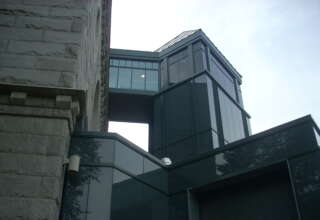
Along with Ogilvy, many postmodern social theorists and observers (for example, Bauman, 1992, pp. 150- 152), question the need for a single unified image of the future, arguing instead for a more process-oriented (Whiteheadian) notion of future imaging. Democracy, according to William Hastie (quoted in Gross, 1980, p. 349) is “a process, not a static condition. It is becoming, rather than being. It can easily be lost but is never fully won. Its essence is eternal struggle.” This description regarding the delicate and often elusive entity called “democracy” seems to be particularly salient in 21st Century politics in the United States (and many other countries). From this more process-oriented and contextual perspective, it is in the political, economic, psychological, sociological, and even spiritual process of formulating a new image of the future that a society finds its coherence and sustaining integration. To arrive at a single image or even several related images is absurd in the fragmented postmodern world of the mid-21st Century. However, the act of searching out such an image or set of images might be appropriate and essential for a viable community or society—and for the emergence of true freedom.
A Postmodern Future of Differentiation and Integration
What, then, will be the nature of a society that manifests true freedom? Is it possible for our preliminary and tentative reflections on Freedom in 1994 (Bergquist and Weiss, 1994) to be expanded into a dialogue regarding the nature of freedom in 21st Century Eastern Europe and the United States? It would, of course, be presumptuous of me to formulate a detailed plan for Hungary, Estonia, or the United States. However, our interviews and observations in Eastern Europe align with some of the observations made by Gergen—and Ogilvy in particular. In 1994, Berne Weiss and I suggested that we must do an effective job of creating, recognizing, and making use of diversity of type, function, and character. This is a process called differentiation (Lawrence and Lorsch, 1967; Bergquist, 1993).). At the same time, we must find, hold, and celebrate the traditions, values, myths, and stories that bind members of a society together. This is a process called integration. True freedom in any society might require a balancing and interweaving of both differentiation and integration.
With freedom comes the potential for greater diversity, specialization, individualism, and fragmentation, as well as greater nationalism, racism, ethnocentrism, and regionalism. Freedom calls for a comparable increase in integrative functions. A void is left when authoritarian regimes collapse, when the monolithic state bureaucracy is dissolved, and when the overarching ideology and political doctrine (in Eastern Europe this was Marxism) and vision of a future society is discredited. In its place must come a new, integrative vision (or integrative process of deliberating about a shared vision). A new, genuine sense of community must be built on something other than just hatred for another people or doctrine. The integration must occur at both the personal and societal levels. Moreover, the integration cannot simply occur through the reintroduction of centralization of vision and functions. The former Soviet Union provides a compelling example of centralization having failed miserably.








